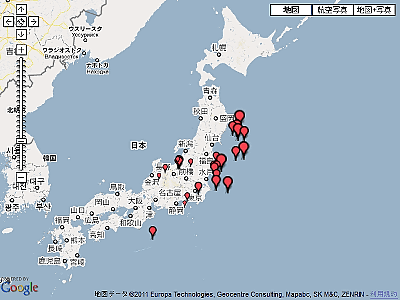'Time-lapse function' that allows you to understand the changes of the earth over the past 37 years at a glance is implemented in Google Earth

We have added a 'time-lapse function' to the
Time flies in Google Earth's biggest update in years
https://blog.google/products/earth/timelapse-in-google-earth/
The time-lapse feature, which Google calls 'the biggest update since 2017,' is a feature that allows you to view 24 million satellite photos taken in the last 37 years as a time-lapse movie. You can watch a single 4.4 terapixel-sized video mosaic that has converted 20 petabytes of satellite imagery over a total of over 2 million hours on tens of millions of machines on Google Cloud.
You can watch a movie that Google has summarized the highlights of this time-lapse function from the following.
Exploring Timelapse in Google Earth --YouTube
Let's actually use the time-lapse function of Google Earth. First, access Google Earth from the following URL.
Google Earth
https://www.google.co.jp/intl/ja/earth/
Click 'Launch Earth' on the top page.
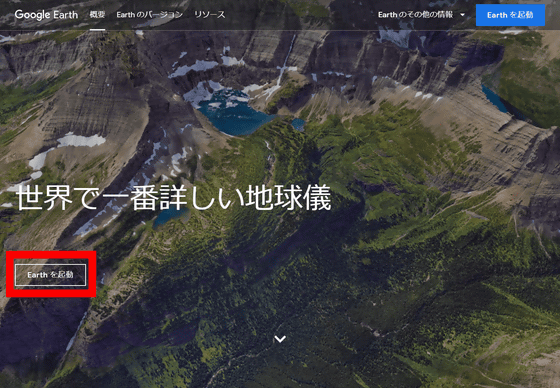
Click the icon like the steering wheel.
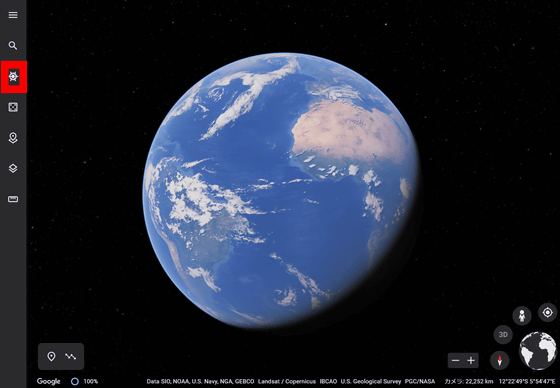
Scroll a little and select 'Google Earth Timelapse'.
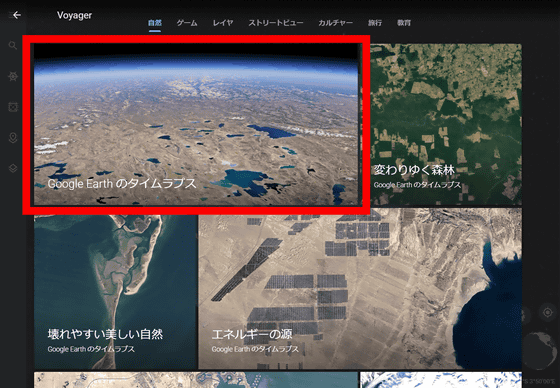
Then, you can zoom in on the area where you can see the climate change well, and you can see the satellite photos from 1984 to 2020 as a time-lapse movie.
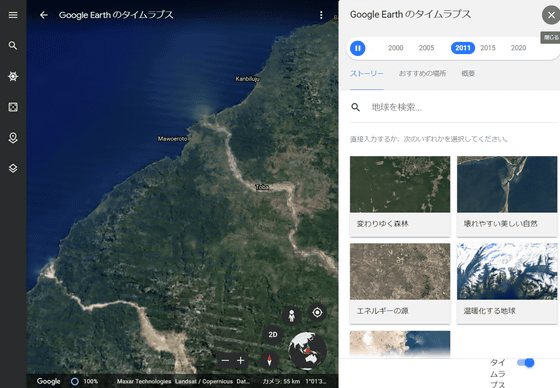
If you want to see other areas, select each option from 'Story' and 'Recommended places' in the right column. This time, click 'Warming Earth' from 'Story'.
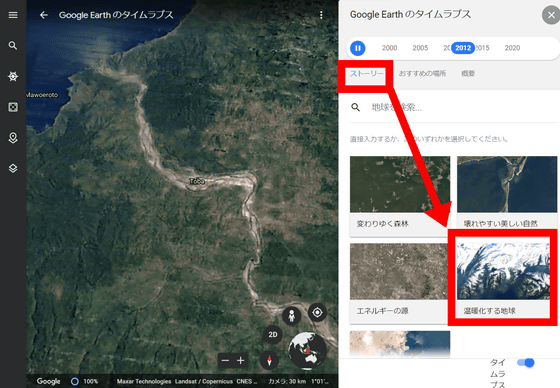
In 'Warming Earth,' you can see the
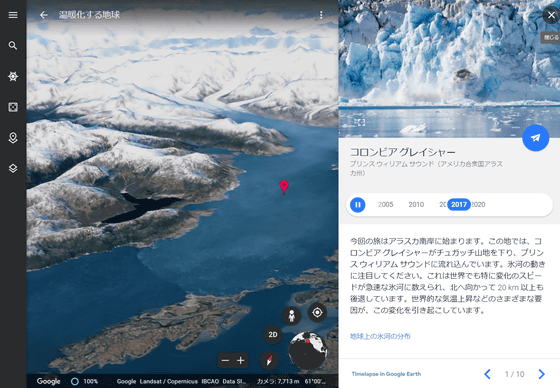
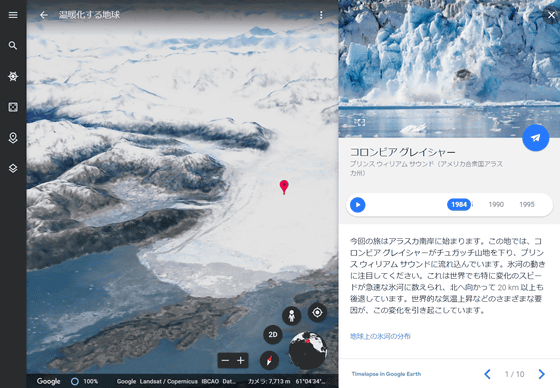
You can also see the timelapse of any place such as


Google says about this feature, 'I encourage you to take a look at the timelapse yourself and share it with others. You'll be amazed at coastline changes, tracking big city growth, tracking deforestation, and more. Visually. Evidence can reach the heart of the debate in ways that cannot be expressed in words, and can convey complex issues to everyone. ”“ Time-lapse perspective discusses the most pressing global issue of climate change. I hope it will deepen, encourage discovery, and change the perspective. '
Related Posts:
in Web Service, Science, Video, Posted by darkhorse_log





